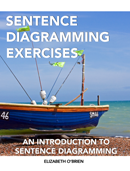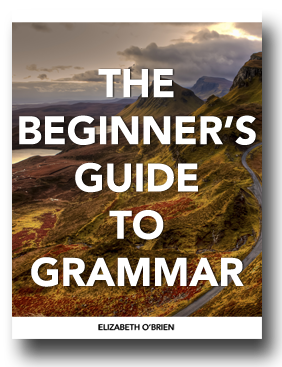Download your free grammar guide here.
Download your free grammar guide here.
Chapter 10: The Noun Clause
Chapter 10: The Noun Clause
- Home
- How to Diagram
- Diagramming Noun Clauses
A noun clause is a dependent clause that acts as a noun. That means that the whole clause is performing the job of one part of speech!
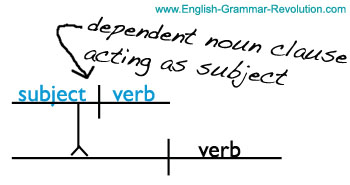
Since these act as nouns, they can perform any of the noun jobs. They can be subjects, direct objects, indirect objects, objects of prepositions, predicate nouns, and more.
Check out this sentence:
Broccoli is fine with me.
The word broccoli is a noun performing the job of the subject.
Now look at this sentence:
Whatever you want is fine with me.
Now, whatever you want is the subject! It is a whole clause performing the job of a noun.
Notice that unlike adverb and adjective clauses, noun clauses are not modifying anything. They are acting as nouns within the independent clause!
They may be introduced by any of the following words:
that, if, whether, who, whom, which, what, when,
where, how, why, whoever, whenever,
whatever, however, whichever, whomever
10.0 Diagramming Noun Clauses
Start by identifying the noun clause in the sentence. Then, decide what role it plays in the sentence. Is it the subject? Is it the direct object?
Then, diagram the independent clause. I know this seems kind of strange because noun clauses often function as integral parts of the independent clause (subjects, direct objects…). For this reason, we can call the independent clause the host clause.
Diagram the noun clause above the noun slot in the diagram that corresponds with its function (subject, direct object, predicate noun…). Then, attach it to the diagram with a pedestal. Looking at the example sentence diagrams below will make it easier!
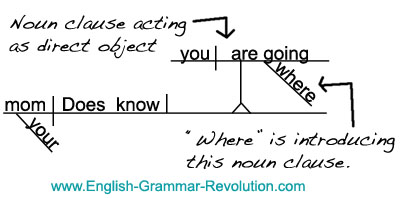
Does your mom know where you are going?
Does your mom know = independent clause (host clause)
where you are going = noun clause functioning as direct object of does know
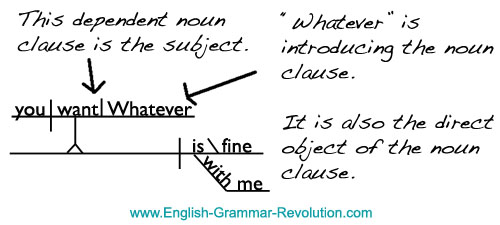
Whatever you want is fine with me.
is fine with me = independent clause (host clause)
Whatever you want = dependent noun clause functioning as the subject
Directions: As you diagram the following sentences, start by deciding what the noun clause is acting as. Place it on its own line just above wherever it goes in the independent clause.
Connect the sentence diagram to the independent clause with a little forked line.
1. Where the sock had gone was a mystery.
2. I wonder how I lost it.
3. My mom knew where I lost my sock because she found it in the dryer.
4. Now I am prepared, and I'll go with whoever is ready.
5. Wherever we are going will be wonderful.
Check Your Answers
10.0 Diagramming Clauses
Get these answers in the ebook.
Would you like to download these sentence diagramming exercises?
- 121 Pages
- Ebook, Instant Download
- Includes Instructions & Exercises For Diagramming Subjects, Verbs, Adjectives, Adverbs, Prepositional Phrases, Conjunctions, Interjections, Adverb Clauses, Adjective Clauses, Noun Clauses, Gerunds, Participles, & Infinitives
- Includes All Answers
- Printable
- 100% Money-Back Guarantee
- Only $19
>> Move On To Chapter 11: Diagramming Verbals

Hello! I'm Elizabeth O'Brien, and my goal is to get you jazzed about grammar.
Our Free Guide Gives You A Fun Way
To Teach And Learn The Basics v

Elizabeth O'Brien is the creator of Grammar Revolution.
Her lessons are guaranteed to give you more confidence in your communication skills and make you smile. :)
